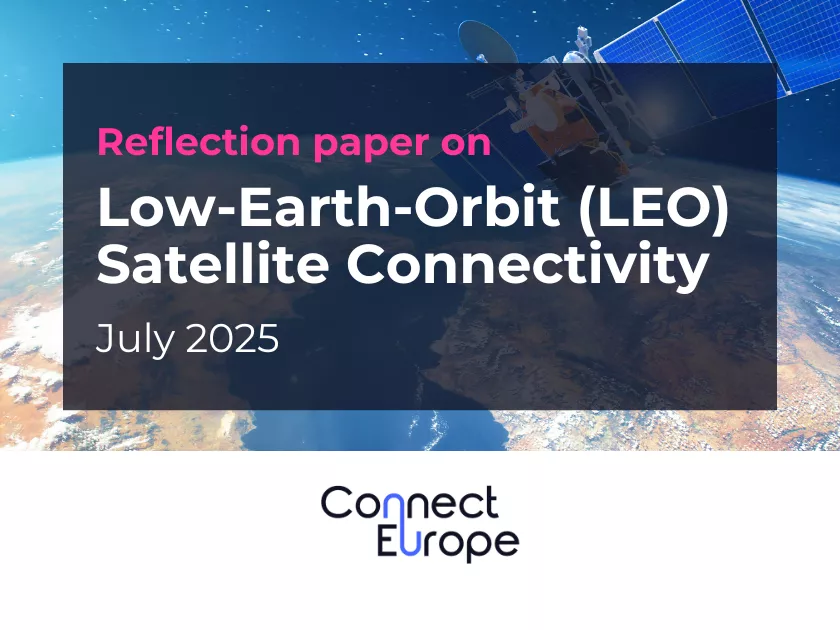Reflection Paper on Low-Earth-Orbit Satellite Connectivity
The present reflection paper aims at providing an overview of satellite Low-Earth Orbit (“LEO”) connectivity services with a special focus on direct-to-device (D2D) service, by exploring the potential use-cases and partnerships, competition dynamic, and sovereignty considerations.

It also looks into the regulatory level playing field between satellite and terrestrial connectivity and raises spectrum policy issues related to the provision of LEO satellite D2D communications.
Mobile and fixed high-speed networks play a central and essential role in achieving the key objectives of the European Digital Decade, gigabit connectivity for all by 2030 and full 5G coverage in populated areas, to meet future connectivity needs and give rise to innovative products and services. Today, terrestrial networks nearly reach the entire European population with at least basic broadband services. High-speed services, i.e. 5G and fibre, have respectively reached 87% and 70.5% of the European population by the end of 2024 . Non-terrestrial networks (NTN) are set to play a role in supplementing the existing terrestrial communication infrastructure by providing services to remote and currently underserved areas.
The investment in high-speed digital infrastructures remains the greatest dynamic strength in unlocking new opportunities for European global competitiveness to enable the progressing digitalisation of industries. That said, recently, with a view to potential synergies, interest has grown in the telco-satellite market to forge partnerships between telecom and satellite players to supplement coverage and resilience and in this context to allow standard smartphones and Internet of Things (IoT) devices to connect with both cellular base stations and satellite systems when out of range of terrestrial connectivity.



